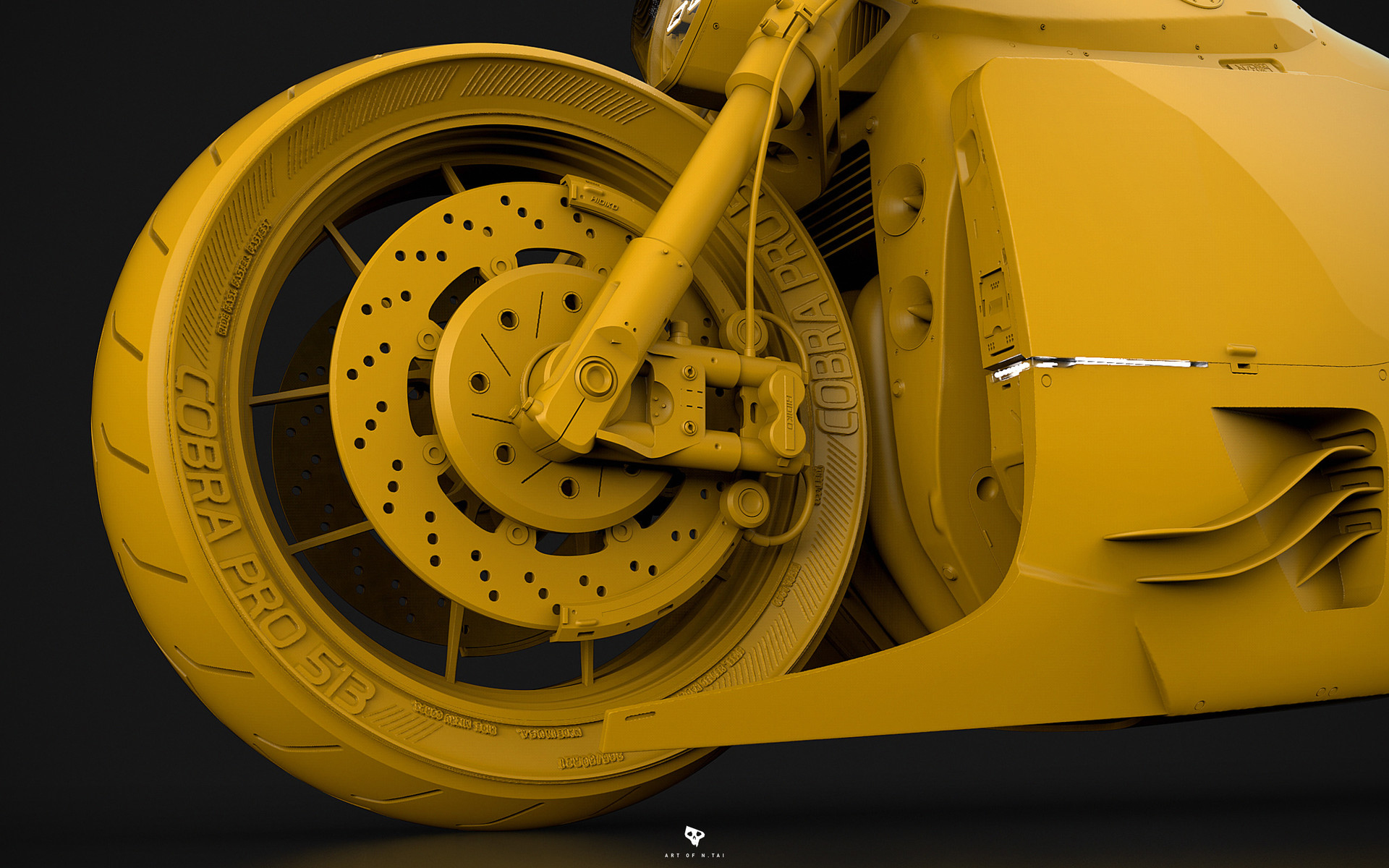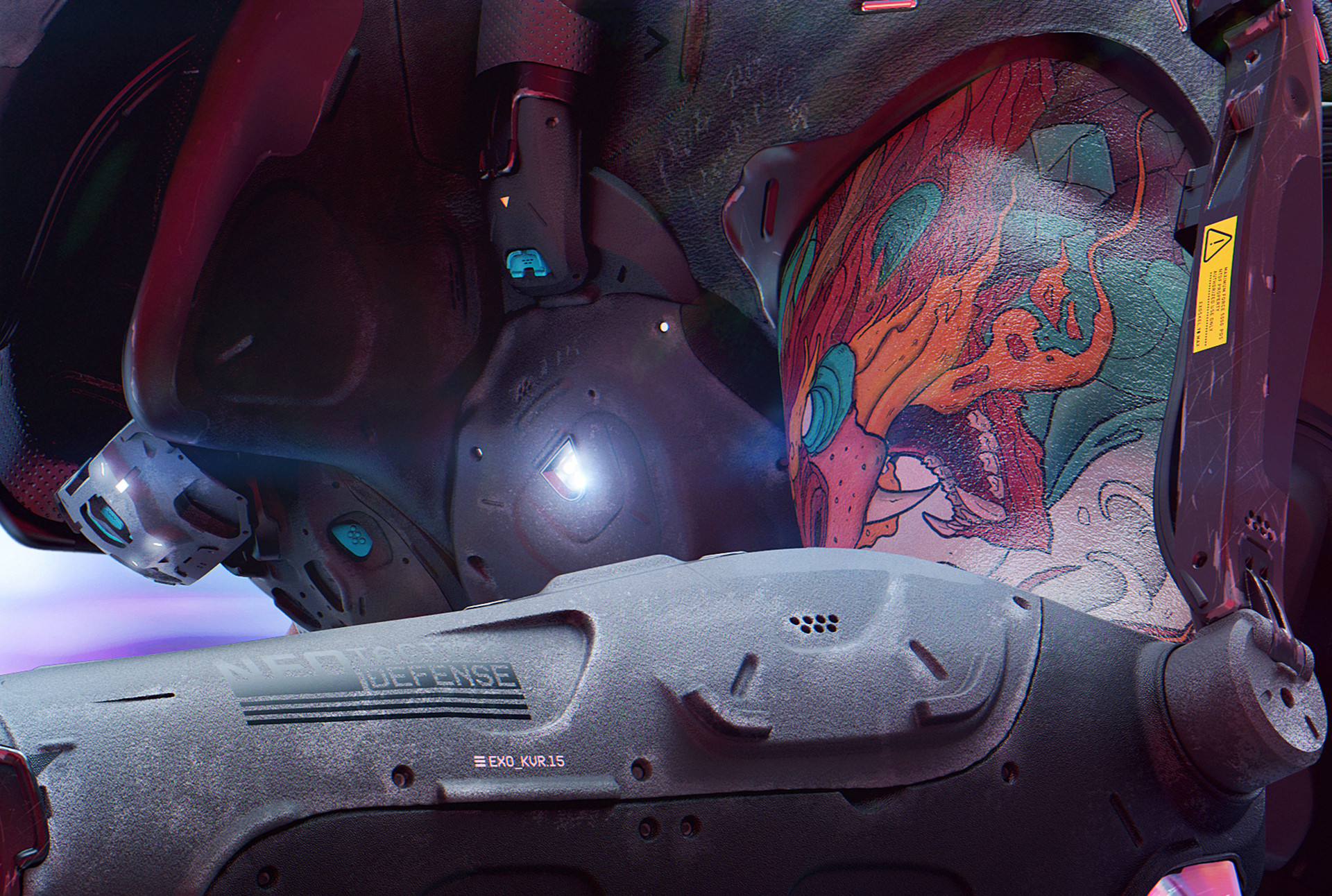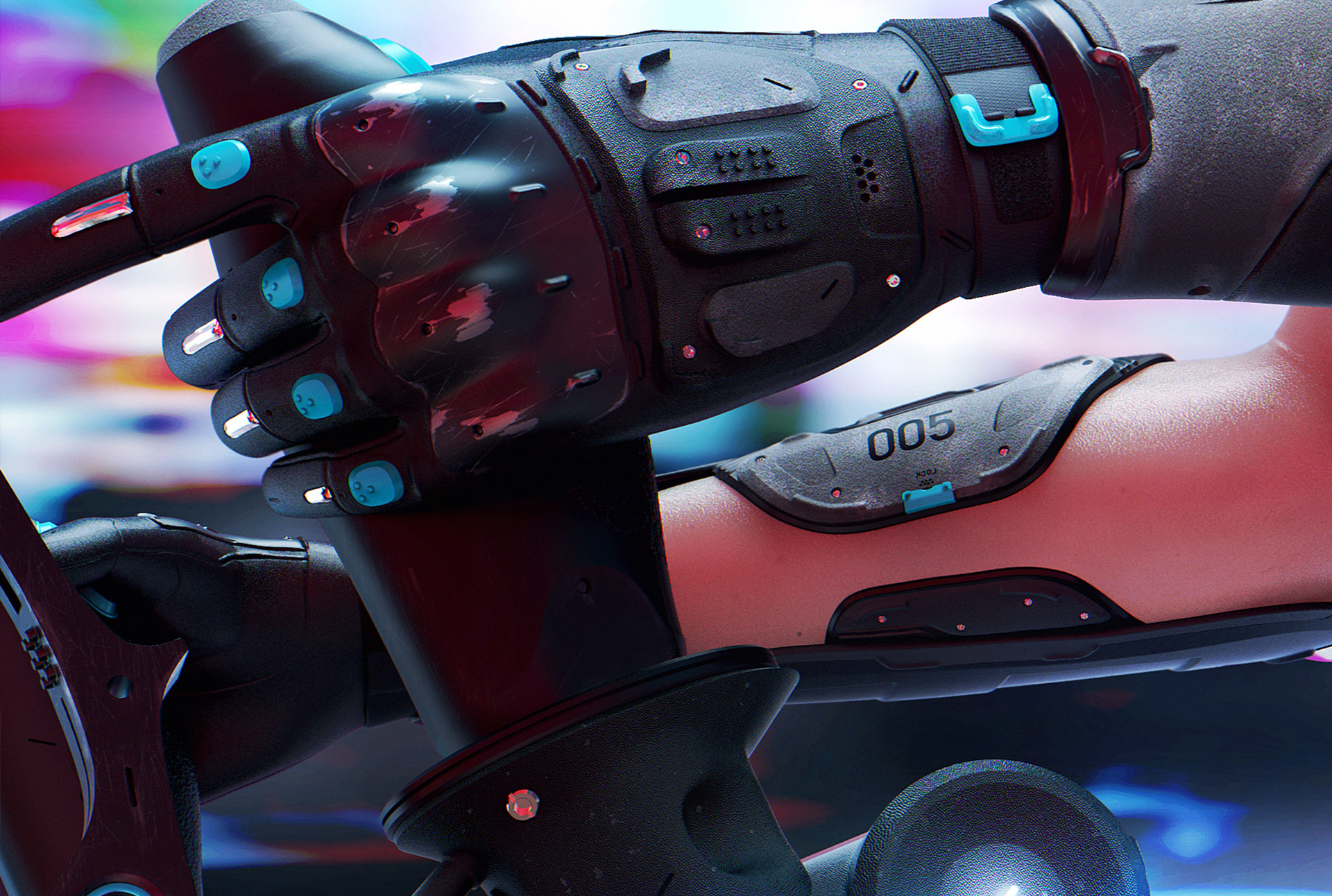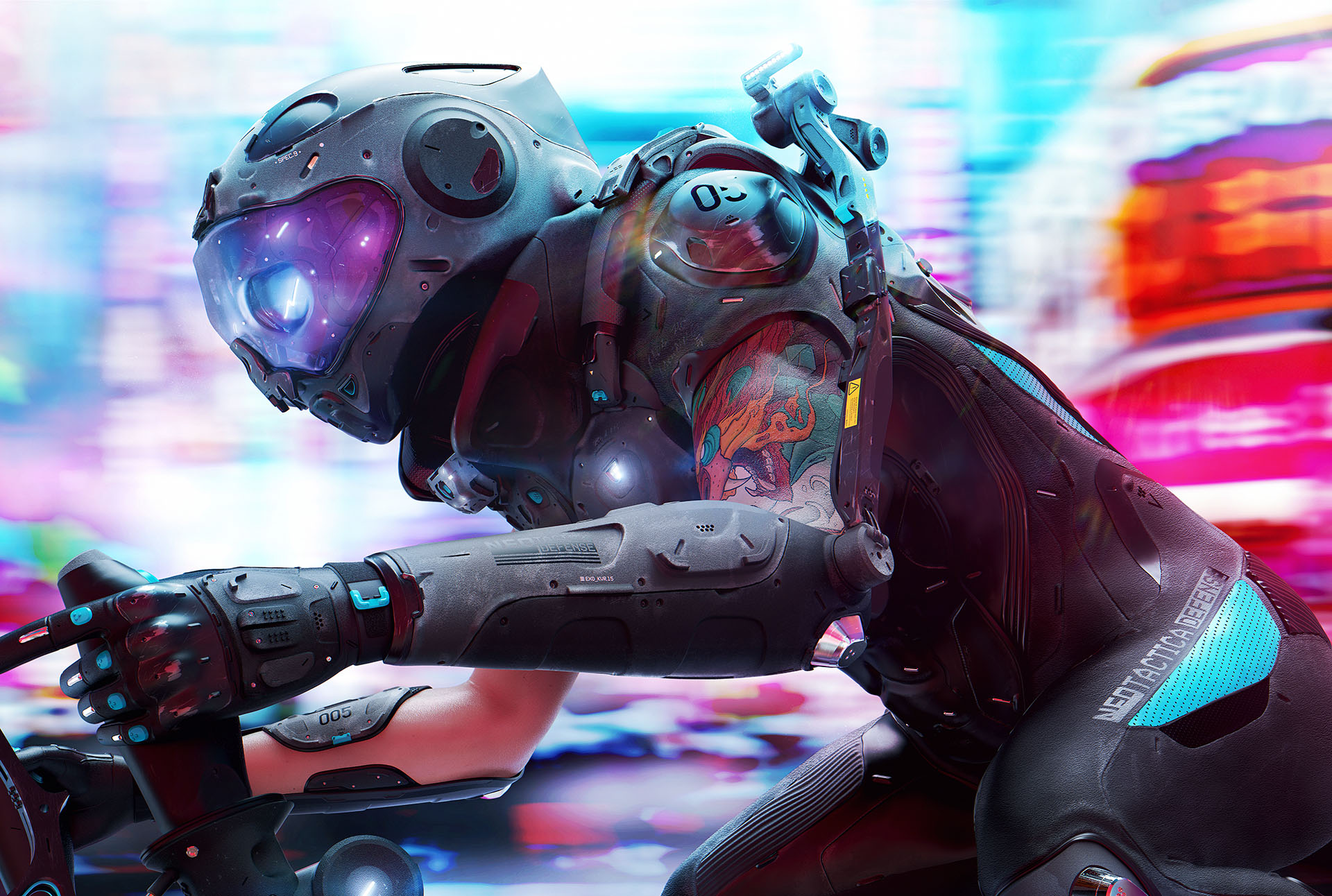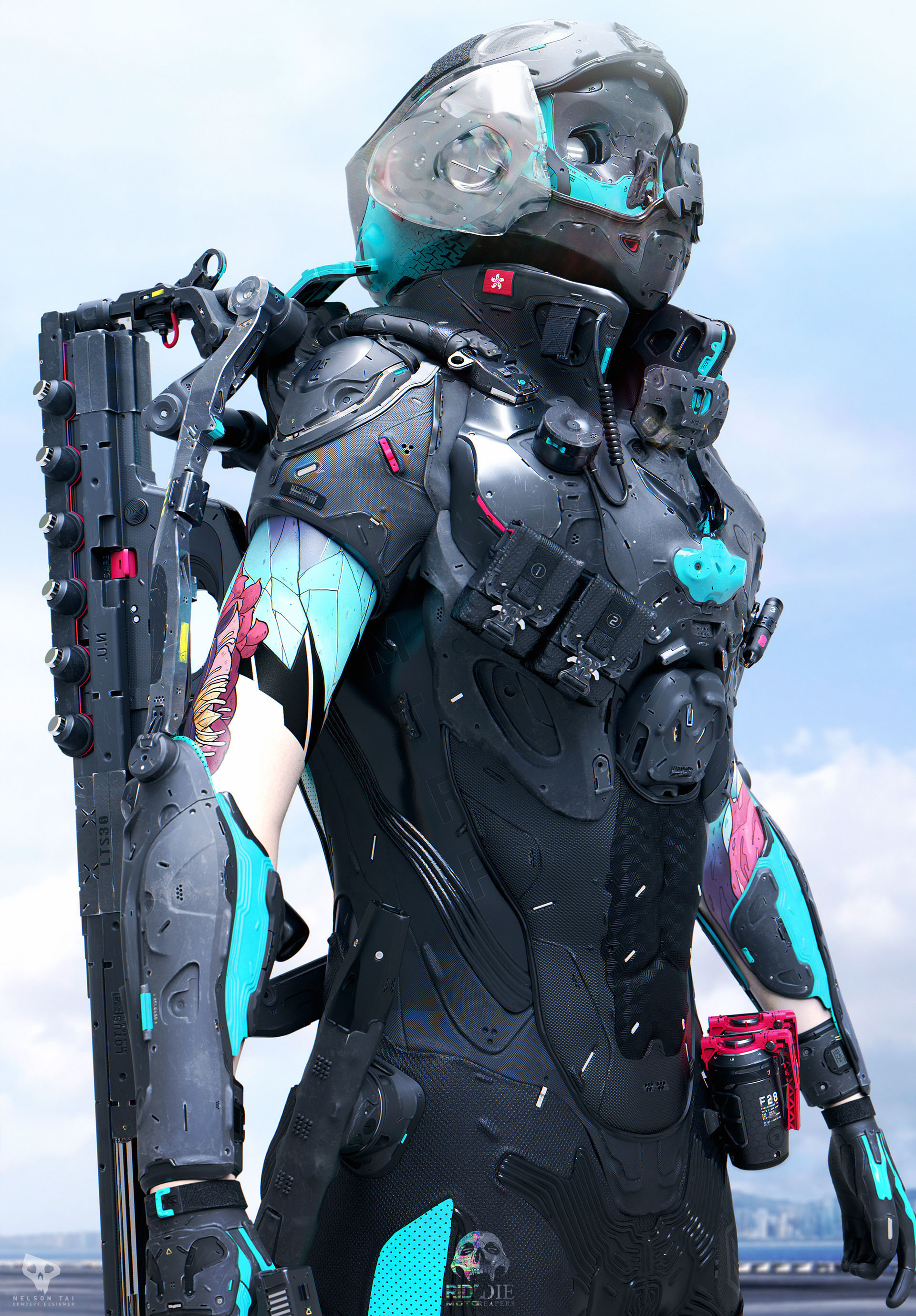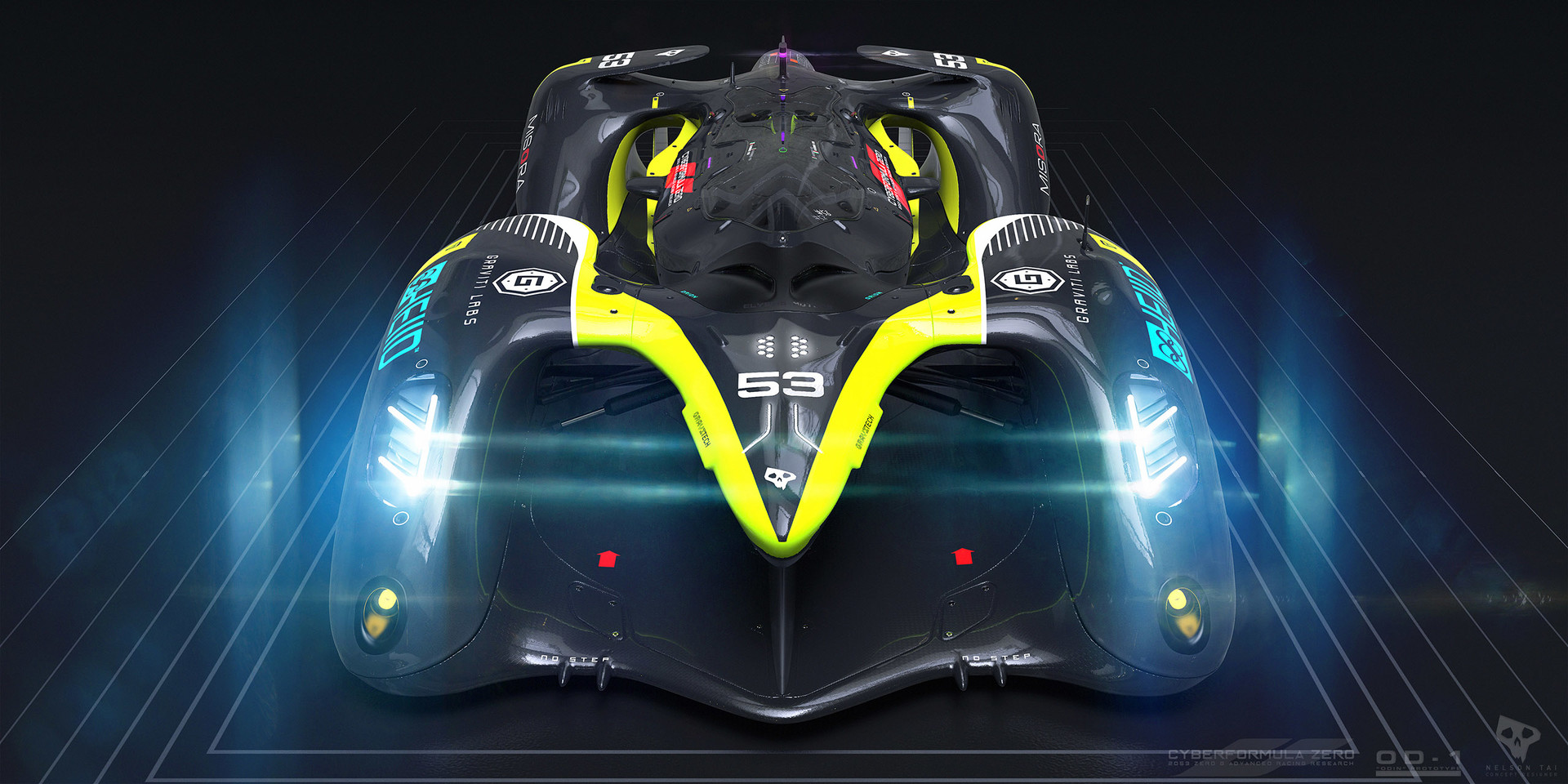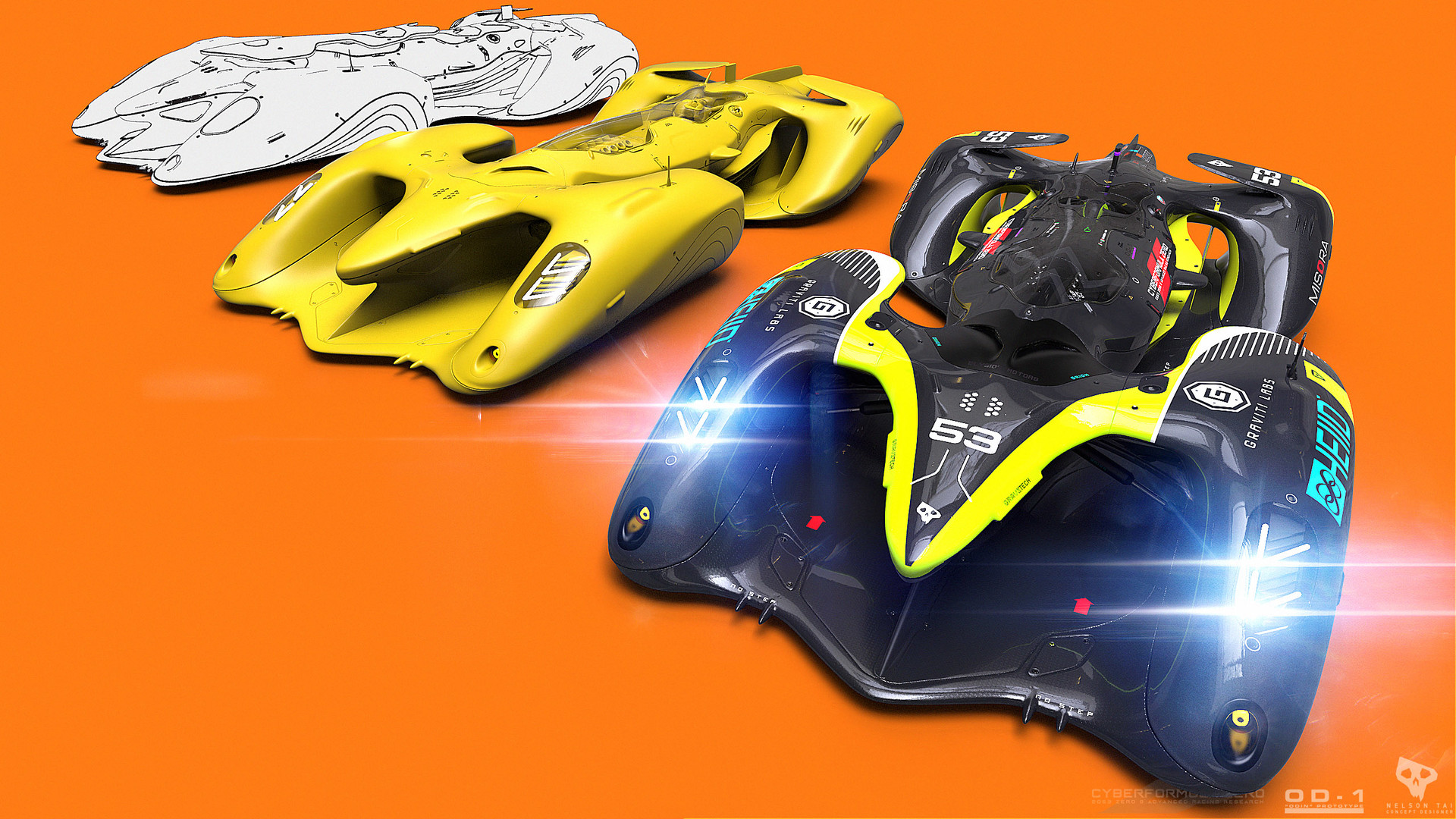Speed, Sci-Fi, and Badass — Three words that describe Nelson Tai’s work. The Hong Kong based Concept Designer delivers characters, creatures, weapons and more to the film and entertainment industry using KeyShot. We had the opportunity to hear from Nelson about how he got his start and ask him why KeyShot is so important to his process.
What sparked your interest in becoming a Concept Designer?
I started off my career as a web designer, but got really bored of it after a few years and felt the need to pursue something else. My wife’s love for movies is the main spark for my interest to pursue a career in the film industry. I didn’t know what would be required to get into the industry but I assumed some 3D work would be a good start. I saw artists using ZBrush to design stuff in 3D when we watched some ‘behind the scenes’ videos of movies on YouTube, so that inspired me to learn it and hope that some 3D work in my portfolio would be good enough to get me into some studio.
 Sono stata fortunata e ho trovato il mio primo lavoro in 3D quando ci siamo trasferiti da Toronto a Hong Kong circa quattro anni fa. Sono stato assunto per FATface (VFX studio) as an animator, but instead of any animation work, I became involved with designs for the studio’s main sci-fi film project, "Guerrieri del futuro". Ho iniziato a sviluppare la mia carriera come Concept Designer grazie al mio capo Kofai (supervisore di FATface e direttore di "Guerrieri del futuro") per la sua fiducia e per avermi dato opportunità di progettazione che avrei potuto solo sognare.
Sono stata fortunata e ho trovato il mio primo lavoro in 3D quando ci siamo trasferiti da Toronto a Hong Kong circa quattro anni fa. Sono stato assunto per FATface (VFX studio) as an animator, but instead of any animation work, I became involved with designs for the studio’s main sci-fi film project, "Guerrieri del futuro". Ho iniziato a sviluppare la mia carriera come Concept Designer grazie al mio capo Kofai (supervisore di FATface e direttore di "Guerrieri del futuro") per la sua fiducia e per avermi dato opportunità di progettazione che avrei potuto solo sognare.
Un'altra chiave importante per l'inizio della mia nuova carriera è stata l'opportunità di lavorare sugli incredibili progetti di Mike Nash e Alex Figini. Alcuni dei primi compiti che mi sono stati affidati all'inizio sono stati quelli di sviluppare ulteriormente i loro progetti per il film (aggiunta di funzioni, riprogettazione di alcune parti, dettagli, sviluppo visivo e così via). Il loro lavoro mi ha davvero impressionato per la qualità e il livello di lavoro che devo raggiungere per crescere come Concept Designer.
Qual è stato il punto di svolta nella sua carriera?
Come già detto, l'ispirazione di mia moglie per questo percorso professionale sarà sempre il più grande punto di svolta. Poi, naturalmente, le opportunità offerte da FATface sono state il punto di svolta più importante. In termini di software che hanno davvero cambiato la mia carriera, ZBrush sarebbe sicuramente il numero uno. Ha permesso a un artista 2D come me di passare al 3D in modo sensato. All'epoca avevo provato altri pacchetti 3D, ma non funzionavano per me. È stato incredibile usare il 3D per progettare in modo così artistico e poi avere la possibilità di vedere i progetti diventare realtà quando vengono stampati in 3D.
Anche alcuni progetti personali sono diventati molto importanti per aprirmi nuove opportunità. Uno di questi è la mia idea di moto NZR800. Mi ha messo in contatto con il team di Pixologic, che in seguito mi ha dato l'opportunità di testare ZBrush in versione beta. Il beta testing ha poi portato a una copertina della rivista 3D Artist! Il team di Pixologic è stato molto gentile e mi ha sostenuto nel mio lavoro, motivandomi a fare sempre meglio.
What is unique about your approach to a project?
I don’t think there’s anything particularly unique about my approach to a project. It’s just important to understand a project’s vision and design towards that vision while adding your own personal touch to it. In terms of workflow, it’s very similar to that of many Concept Artists/Designers: Zbrush > KeyShot > Photoshop. These days, I would add any other software to speed up the design process, but ZBrush is still the core of the 3D design. Working somewhat fast and having a decent library of assets is important to keep ideas flowing. The initial design blockout will often look hopeless, but I try to visualize the design a few steps ahead and stay focused to shape the blockout into something presentable.
Qual è il suo software di modellazione 3D principale?
ZBrush. Il modo in cui funziona mi sembra semplicemente sensato. Senza dovermi preoccupare della topologia o di aspetti tecnici del genere, posso semplicemente divertirmi a progettare qualsiasi cosa. Anche la maggior parte dei designer che ammiro lo usa come strumento principale, quindi sono sicuro di aver scelto il software giusto quando ho deciso di imparare il 3D.
Where in the process do you use KeyShot?
I use it to render all my concept images. I sometimes spend more time in KeyShot to get more refined render final results, but usually I just roughly assign materials, textures, and HDRI to render a base image for further paintover work in Photoshop. As an artist who started off with no knowledge of 3D and rendering, KeyShot really can’t get any easier in allowing me to get great results. My designs just instantly look more believable after simply dragging and dropping some materials around. I’m always bridging my ZBrush design over to KeyShot to check what areas require changes or more details.
What makes KeyShot an important tool to have?
If you use ZBrush, then I would think KeyShot is basically a must if you want your work to look presentable and professional. It is fast and easy to get great and believable results. Most of the work is just as easy as dragging and dropping elements! The Material Graph and HDRI Editor are also very easy to use to get more refined results. KS keeps the whole process of assigning materials, lighting, and rendering fun and creative.
Che consiglio daresti a chi è interessato a fare quello che fai tu?
Ci sono così tanti tutorial gratuiti online che non credo ci siano molte ragioni per non provare a fare questo lavoro se si è interessati. Seguite alcuni tutorial e create i vostri progetti personali con le nuove competenze che imparate. I progetti personali si sono rivelati molto importanti anche per la mia carriera, perché mi hanno aiutato a entrare in contatto con artisti, aziende e opportunità che non mi sarei mai aspettato. I progetti personali richiedono molto tempo, ma se vi piace, probabilmente non vi dispiacerà dormire un po' meno. Godetevi quello che fate e le cose andranno bene.










